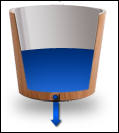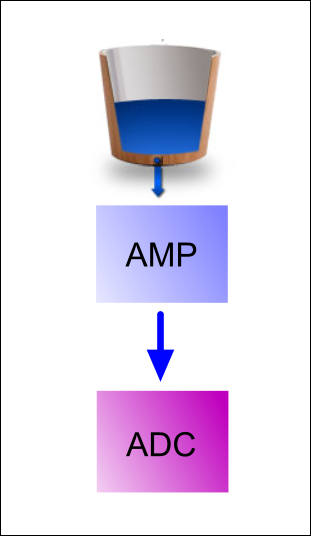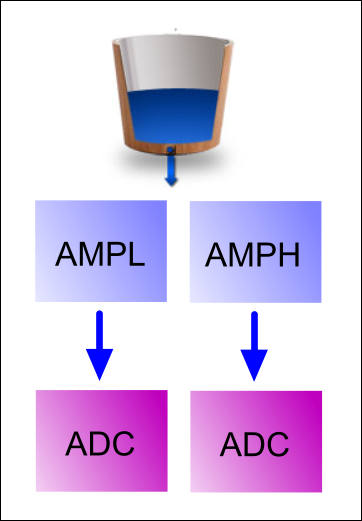
-
Maybe we can get Lumix rep from NJ HQ Sean Robinson to join this forum so he can push these ideas forward to Pany. If not, we can still forward this to him.
You can post more, we can print them formal and hand them to consumer division at PhotoPlus.
In addition to interview we plan.
@driftwood may be the best connection via PV.
Well, to be connection you need to communicate first, and Nick is not really master in it.
-
Ok, I have send Sean Robinson a notification via facebook. I hope he reads it and finds it way here.
-
That was quick, here is Seans answer:
Always happy to read and take the suggestions. Can't make any promises for implementation, but we do read them and pass them along to the relevant teams
-
After seeing the GH5 and the G9 specifications and features, I think there are only three things that can make people buy the GH6:
1-a new sensor technology with more dynamic range and less noise
2-a 33 megapixel sensor for photo/video with 8k video H265 HEVC
3-HDR video in 4k combining two different exposures from the sensor
a 33 megapixel sensor can do 8k video and 4k hdr video with two exposures.
I think small upgrades like better EVF and LCD, two LCD, better autofocus and other things will not make people upgrade from GH5 and G9.
NHK have plans to start broadcast 8k tv channel in japan in december 2018: https://www.broadbandtvnews.com/2017/10/18/nhk-to-launch-8k-channel-in-december-2018/ so people will start buying 8k tv sets and monitors and a 8k mirrorless camera in 2019 will be welcome.
-
@apefos I think asking for 33 mpix and better dynamic range and less noise are mutually exclusive. So your asking for a giant leap in sensor tech perhaps to high an expectation. But what the hell reach for the stars. I think you might be dead wrong on the autofocus issue as competitors give us better and better autofocus the failure that is DFD will be more apparent and people will leave for better systems.
I am old enough that it use to be said stills autofocus was undependable and not for professionals. Until it became more dependable and faster than the best professional and it is taken for granted now. In time video will go thru the same evolution I'm sure and if Panasonic doesn't get there shit together they will fade.
As to 8K I think we will have to see how many people have 4K tvs by 2018 lol. Otherwise your talking a tiny niche group. I think 8K will be 2020 maybe and they will have to find amazing sensor tech or accept it will only be on ultra expensive high end FF cameras.
-
I think asking for 33 mpix and better dynamic range and less noise are mutually exclusive. So your asking for a giant leap in sensor tech perhaps to high an expectation
He also asks about giant leap in fundamental physics. Just check such thing as QE (Quantum efficiency) of current sensors. You just can't have any "giant leaps" anymore.
-
33 megapixels is not that much comparing to current 20 megapixel. It would be less than a fstop difference in terms of noise. If GH5 and G9 can do good video up to iso 1600, the 33 megapixel m43 camera could do it with same amount of noise in iso 800 or 1000.
A better sensor technology could keep the 33 megapixel sensor in the same amount of noise comparing to current 20 megapixel sensor, or even less noise.
33 megapixels would be also very good for photo work.
The sensor would need to be 7680 x 5760 in 4:3 aspect ratio, it would be 44 megapixels total. This way it would be 1 or 1 1/3 fstop difference in terms of noise.
Another approach Panasonic could do is to follow the Sony philosophy and release a Sensitivity version, with only 9 megapixels, to do low light 4k video.
-
Global Shutter...pleeaaasssseeeee!!! :D
-
A good strategy for Panasonic would be:
GH6: 9 megapixel sensor, 1,9:1 aspect ratio, 4096 x 2160 pixels, sensitivity version, 4k video, with 21,6mm diagonal sensor designed for video, and 36 megapixel high resolution photo mode. (GH6s)
G10: 44 megapixel sensor, 4:3 aspect ratio, with 7680 x 5760 pixels, with 8k video hevc 16:9, and 176 megapixel high resolution photo mode.
people who wants better low light 4k video would buy the GH6s and people who wants 8k video and better photo would buy the G10.
Or it could be two versions of GH6: GH6s (sensitivity) and GH6r (resolution).
-
@apefos no it's not! There are advantages to more resolution and reducing to output size see resolution tests sony 6500. They should simply have one camera that does it all very well at the top end. For stills there are simply better alternatives and probably always will be. As far as 176 mp mode are you serious lol.
-
Multi aspect sensor would be nice. GH2 was the last to have it.
Dual Native ISO would also be nice if possible.
Global Shutter version would be a dream.
-
Dual Native ISO can solve the noise problem in 8k sensor.
-
Dual Native ISO would also be nice if possible.
No such thing as "Dual Native ISO" exist, it is marketing bullshit. I'll later make post about thing they call such.
Global shutter leads to significant issues with noise and hence - DR, plus it'll be sensor price hike.
-
There are some explanations online saying the dual native iso works with two different analog circuits in the sensor before the analog/digital conversion, one circuit for low iso and other circuit for high iso.
People who tested the Varicam said that the iso 5000 (dual native) is less noise than iso 4000, and looks the same as iso 800.
The EVA1 also has dual native iso, so the future GH6 with 8k sensor can have it.
-
Make the GH6 even easier to use. Should work better in semi-auto modes (so content creators can focus more on framing and what's going on in front of camera) and ofcourse still please the manual crowd.
I second many of the good suggestions already, including them and some other in the list below:
General:
- Reliable and fast AF
- Better low-light performance
Audio:
- Support 4 channels of audio
- Support wireless monitoring of audio via bluetooth headset
Connectivity and interface:
- Better utilisation of smartphone as second screen
- Rethink how we offload and log footage. Smart tagging etc.
Experimental ideas:
- Cooperate with Aputure (or similar) to make the Vari-ND DEC Adapter (or similar) work perfect; strip away all external boxes and eliminate need for external power, make the Canon lenses Autofocus smooth with GH6 PDAF, buttons an adaptor and make custom config button on Panasonic camera to adjust variND on adaptor.
- Integrate wireless audio reciever in camera (aka Rode Wirelink type tech) - I really miss keeping having wireless audio, while keeping camera compact stealth.
-
Very good idea. A wireless audio receiver with two simultaneous channels integrated in camera would be awesome. It would avoid the need of extra equipment and unreliable cable conections. It would allow the use of two lavalier mics at same time or two shotguns. Nice!
-
Support wireless monitoring of audio via bluetooth headset
It is really bad idea. Monitoring means that issue you hear is issue with recording, not with horrible Bluetooth performance.
-
It is really bad idea. Monitoring means that issue you hear is issue with recording, not with horrible Bluetooth performance.
I agree it feels risky and I don't know the answer, but the question would be if newer tech like bluetooth in it's last iteration is stable enough that it might be a usable option. I know for myself that there are shooting scenarios where I don't monitor at all, but I would have monitored if I could have used wireless headphones. Ofcourse also having wired monitoring as a safe fallback.
-
Imagine the GH6 with 4096x2160 9megapixel 4k sensor with dual native iso = low light/available light monster!
-
Imagine the GH6 with 4096x2160 9megapixel 4k sensor with dual native iso = low light/available light monster!
Again. No such thing as "dual native iso" exist outside marketers minds.
Thing they talk about is simple as hell and has nothing to do with this.
-
4 channel audio recording with adjustable ALC on 2 channels and improved sensor (lower noise, better dynamic range) for me please.
-
@Vitaliy_Kiselev "Again. No such thing as "dual native iso" exist outside marketers minds.
Thing they talk about is simple as hell and has nothing to do with this."So how do you explain the fact that iso 5000 in varicam is less noise than iso 4000 and looks like iso 800?
-
So how do you explain the fact that iso 5000 in varicam is less noise than iso 4000 and looks like iso 800?
I'll make detailed post later and explain why and how it has slightly less noise.
-
Panasonic explains dual native iso:
EVA1 QUESTIONS ANSWERED
For a cinematographer that has never shot with a VariCam before, can you explain the Dual Native ISO feature?
MITCH GROSS:
Panasonic developed a process to read the sensor’s photosites in a fundamentally different way than it’s traditionally done. More information can be extracted without degrading the image. That effectively gives the imager greater sensitivity and separates the signal from the background noise. It’s essentially a different way of reading the camera sensor and it gives it two different native ISOs or sensitivities. Whereas in all others cameras, you just dial the gain up to get more sensitivity but you get a lot of noise in the image. You can also do that on the EVA1, but if you just switch between the two native ISOs, they’ll look the same as far as the amount of noise. There are two ways that one might likely want to use this. First, you can shoot with zoom lenses when normally you would have to shoot with primes because zoom lenses generally aren’t as fast. Instead of having to switch prime lenses, you have more versatility while still getting the right exposure. Another way of using Dual Native ISO is the ability to lower your light levels. In shooting with lower light levels, you will save money, time, and you can shoot with more practical lights in your surroundings. That can be for a high-end production or a more modest production where it can be used for savings, or a stylistic choice.
ftp://ftp.panasonic.com/provideo/whitepaper/questions_eva1.pdf
-
Exactly. Mitch is best Panasonic representative I know. But he refused to tell how it is really done.
So, how it all works (it is simplified version, of course)
First. Initially you have photons passing filter on microlens above sensor
In a sensors quantum efficiency is the percentage of photons hitting the device's photoreactive surface that produce charge carriers. It is measured in electrons per photon or amps per watt. Since the energy of a photon is inversely proportional to its wavelength, QE is often measured over a range of different wavelengths to characterize a device's efficiency at each photon energy level. The QE for photons with energy below the band gap is zero. Photographic film typically has a QE of much less than 10%, while CCDs can have a QE of well over 90% at some wavelengths. Individual pixel where photons cause certain charge (measured in electronvolts).
Second. After exposure individual pixel can be seen as bucket filled to certain level (charge level)

Part of this charge is not caused by photons induced charge, but from "drunk" random electrons from sensitive area itself and stuff around it. The more heated sensor is, the higher is this noise level.
So, for now it is few ways to increase sensor performance - increase quantum efficiency (very hard) and decrease temperature (used in pro equipment like astro one)
Third. Now we need to get value of this charge (it is very small charge!) in digital form, preferably as accurate as possible. And it is big amount of such pixels.
So, standard way is to amplify signal and later use very fast ADC converters.

Here amplifier adds his own noise (as well as banding, due to simple fact that it is impossible to make exactly same amplifiers).
ADC are also not ideal, least significant digits can be digitized not very accurate.
Fourth. If you have large pixels, good sensor and good margins you can use other approach.

It is not unique, used in any audio recorder able to record safe track. As well as Alexa and BM cameras.
In one option of this approach you can focus on performance of ADCs and use pair of 12bit ADCs for example to get 14bit (or 16bit) data. Digital merge stage also most of the time located on CMOS sensor as it reduce data burden.
Thing that Panasonic mention under "Dual ISO" most probably means that they use very good high bit ADCs in both channels, like 14-16 bit ones (so you can switch to such ADC alone). And also are able to tell merging part that to do, so at high ISO they can use smarter merge.

 sa554.jpg119 x 133 - 4K
sa554.jpg119 x 133 - 4K
 sa555.jpg311 x 536 - 16K
sa555.jpg311 x 536 - 16K
 sa556.jpg362 x 521 - 22K
sa556.jpg362 x 521 - 22K
Howdy, Stranger!
It looks like you're new here. If you want to get involved, click one of these buttons!
Categories
- Topics List23,993
- Blog5,725
- General and News1,354
- Hacks and Patches1,153
- ↳ Top Settings33
- ↳ Beginners256
- ↳ Archives402
- ↳ Hacks News and Development56
- Cameras2,368
- ↳ Panasonic995
- ↳ Canon118
- ↳ Sony156
- ↳ Nikon96
- ↳ Pentax and Samsung70
- ↳ Olympus and Fujifilm102
- ↳ Compacts and Camcorders300
- ↳ Smartphones for video97
- ↳ Pro Video Cameras191
- ↳ BlackMagic and other raw cameras116
- Skill1,960
- ↳ Business and distribution66
- ↳ Preparation, scripts and legal38
- ↳ Art149
- ↳ Import, Convert, Exporting291
- ↳ Editors191
- ↳ Effects and stunts115
- ↳ Color grading197
- ↳ Sound and Music280
- ↳ Lighting96
- ↳ Software and storage tips266
- Gear5,420
- ↳ Filters, Adapters, Matte boxes344
- ↳ Lenses1,582
- ↳ Follow focus and gears93
- ↳ Sound499
- ↳ Lighting gear314
- ↳ Camera movement230
- ↳ Gimbals and copters302
- ↳ Rigs and related stuff273
- ↳ Power solutions83
- ↳ Monitors and viewfinders340
- ↳ Tripods and fluid heads139
- ↳ Storage286
- ↳ Computers and studio gear560
- ↳ VR and 3D248
- Showcase1,859
- Marketplace2,834
- Offtopic1,320






